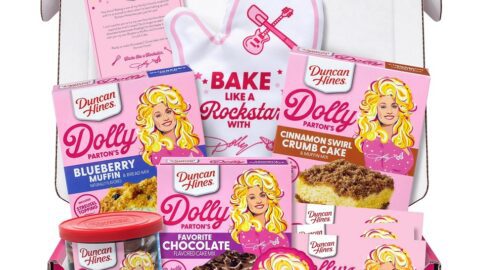Until someone invents a Star Trek-style replicator (“Tea. Earl Grey. Hot.”) that delivers pretty much any item to a consumer with science fiction-style immediacy, retailers remain bound by 21st-century delivery methods. The problems with getting products to people quickly and cheaply are well-known: consumers want fast fulfillment, which is costly to provide, but they don’t want to pay high (or really any) shipping fees.
But just because we’re not yet stepping into transporters to beam us where we want to go doesn’t mean technology has no role to play in cutting fulfillment costs. Supply chain experts agree that the most powerful solutions are those that use predictive analytics to place the inventory customers want in locations as physically close as possible to that end consumer — a simple theory that can be devilishly hard to put into practice.
“When you’re talking about same-day or next-day delivery and the last mile, it’s not only the labor and equipment needed to move it; it’s also inventory positioning,” said Matt Katz, Managing Partner at SSA & Co. in an interview with Retail TouchPoints. Optimizing inventory positioning to meet expected demand is vital, because the need for speed narrows shippers’ options: “From the brand or retailer’s perspective, the longer the lead time, the wider the [delivery] window, the fewer the requirements, the easier it is to manage,” said Katz.
Fast Fulfillment Challenges Abound
The availability and affordability of labor, or the lack thereof, is currently a major issue in achieving fast fulfillment at an affordable cost. “When inventory gets to the last mile, we’re still looking at a shortage of labor, which put the Teamsters in an advantageous position” during the union’s recent contract negotiations with UPS, according to Dr. Thomas Goldsby, Professor and Chair in Logistics in the Supply Chain Management Department of the University of Tennessee. “Unemployment is at 3.5% across the board and it’s still virtually nil in logistics,” he added in an interview with Retail TouchPoints.
Advertisement
Even Amazon, the trendsetter in fast fulfillment, isn’t immune to higher labor costs. The company reportedly will invest more than $440 million in the next year to boost wages for its contracted delivery employees, according to Reuters. Amazon uses these external operators in its delivery service partner (DSP) program, which consists of approximately 279,000 driving jobs and helps Amazon deliver 20 million packages every day in 19 countries.
The very nature of last-mile fulfillment makes it an expensive proposition. “The biggest cost, both in terms of time and money, is how far you’re shipping the product in a small box,” said Abinav Chandra, Managing Director of the Alvarez & Marsal Consumer and Retail Group in an interview with Retail TouchPoints. “The challenge we’ve got in this economy and the way businesses work is that there’s no sharing of infrastructure, because if you’re going to deliver fast in a cost-effective way, you have to invest a lot of CapEx. Amazon is a prime example; they’ve poured so much into [building] their network over the past 20 years and now they have more than 1,000 facilities in the U.S.”
Amazon has taken steps to continue “regionalizing” its inventory to put it closer to its eventual destinations. The company divided it logistics network into eight regions designed to operate self-sufficiently, with commonly purchased items placed into multiple locations throughout the country. This structure means that Amazon doesn’t move items out of each region unless it has to, according to Udit Madan, VP of Transportation at Amazon, quoted in the Wall Street Journal.
The last mile also presents sustainability challenges, adding to a retailer’s carbon footprint. “If I start doing individual customer deliveries, by definition the truck is getting filled with more air at every stop,” said Katz. “Each leg of the journey becomes more expensive as there’s less of a truckload. This is both more complex and more top-of-mind due to ESG [environmental, social and governance]; no one likes to ship air.”
Unfortunately for retailers, fast fulfillment is rapidly moving from a differentiating “perk” to a consumer expectation. “On the front end, when you show the consumer a product, you also have to show how fast they’re going to get it,” said Chandra. Then there’s the problem of meeting the expectation that the retailer has set, which can be solved (to some extent) by underpromising and overdelivering. “You don’t want to say [it will take] five days and then deliver it in seven days,” said Chandra. “If you’re unsure, you’ll promise seven and deliver in four — that’s what everyone does.”
“I don’t think it’s a choice anymore; the offer of immediate delivery and instant gratification is required of all retailers,” said Katz. “Instant gratification might not mean ‘this moment,’ but there’s an expectation from consumers that you’re going to offer it. [It’s true that] there are some segments of consumers that will allow more time before the gratification, but you’re not going to survive as a retailer if you’re defining the delivery window versus your marketplace deciding it. If you’re consistently the slowest service with no other differentiation, you won’t survive it; consumers have told you that.”
Leveraging Stores as Fulfillment Nodes
One way to address these challenges is for retailers to have their network of brick-and-mortar stores double as fulfillment centers, a strategy that both Target and Walmart have employed. Target debuted a larger store concept in October 2022 that includes backroom fulfillment space 5X larger than previous stores of a similar size. Target stores fulfill more than 95% of the retailer’s digital orders and same-day services, accounting for over 10% of the retailer’s overall sales.
Walmart added its second in-store fulfillment center in May 2023 at a store in its home town of Bentonville, Ark. The retailer plans to build these Market Fulfillment Centers (MFCs), which use robotics to streamline processes, into additional stores in the future, part of its overall plan to bring automation to 65% of its stores by 2026.
Currently, Walmart is using its nearly unparalleled store footprint to expand its delivery windows. The retailer has added a late-night feature to its Express Delivery same-day service, promising to deliver orders placed before 9:30 p.m. to customers by 10 p.m.
The challenge here is that the more potential delivery nodes a retailer operates, the more sophisticated its inventory allocation needs to be. “If you have to segment your inventory into 400 different nodes, or 1,500 or 5,000, you’re talking about a very different scale of problem,” versus operating just a few large distribution centers, said Chandra. “If you get the inventory wrong, the opportunity cost is much higher, and it has implications for the amount of inventory you carry. For example, if you make mistakes, you’ll have to carry more safety stock, adding to your costs — and there are going to be instances where you won’t get inventory right. [Inventory allocation] tools are predictive but they’re not perfect.”
Are Higher Shipping Fees the Answer?
It’s become conventional wisdom that consumers adamantly refuse to pay extra for shipping, even fast shipping. The Amazon Effect is in operation here: Prime members get free shipping as part of their subscription, and other paid services like Walmart+ make the same offer, cementing consumer expectations about what (and when) they will pay.
However, just 25% of retailers responding to the 2023 Retail TouchPoints Customer Loyalty and Personalization benchmark survey identified “higher customer charges for formerly free or low-cost services, e.g. shipping and returns,” as a significant challenge to their customer loyalty efforts. This result implies that retailers have some leeway to experiment with instituting shipping fees to cover their fast fulfillment costs.
Major retailers including Macy’s, Saks Fifth Avenue, Neiman Marcus and Abercrombie & Fitch have raised order minimums for free shipping as a way to pass along some of the costs of shipping, according to the Wall Street Journal.
Raising minimums is a relatively painless way to address shipping costs (and can even build larger basket sizes among some shoppers, and there are other potential ways to make shipping fees less of a drag on potential sales. “I happened to be internal at Amazon when it was launching Prime, and they realized two things,” Chandra related. “People hate to pay for shipping, and that hate is, to an extent, irrational. If you price a product at $20 and ask for $5 for shipping, [compared to] pricing it at $25 and offering ‘free’ shipping, the lift in sales [for the latter option] is insane.”
Retailers’ attempts to “bake in” shipping fees (or return costs) to a product’s price can help overcome this psychological effect, but it’s a risky proposition. The RTP Loyalty survey revealed that more than one-third (37%) of responding retailers cited the risk of losing customers due to product price increases as a major customer loyalty challenge.
“It does vary by category, but in general, the faster you get the product, the more you’re going to convert,” said Chandra. “That has been [Amazon’s] mantra all the time: ‘Get it to the customer faster.’ That’s what customers tell us through their behavior, because every time I make it faster the sales jump.”









